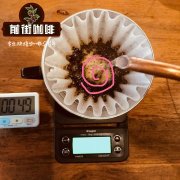How many stages are there in coffee roasting on Starbucks' official website?
How many stages are there in coffee roasting on Starbucks' official website?

Preheating stage: the bean baking machine needs to be heated to a certain extent before baking, which will be different due to the baking mechanism. It is necessary to fully heat the pot to a certain temperature before it can drop the beans. There is no certain criterion for this temperature. It depends on the degree of relationship between the bean baker and the bean roaster.
Steaming stage: coffee roasting begins immediately after entering the beans, because the coffee beans contain about 11-12% water content. At this stage, we keep the bean temperature rising continuously through firepower heating and throttle control. Generally speaking, when the monitored bean temperature reaches 140-150 ℃, the moisture in the bean body is ready to be discharged, so this stage is called the heating steaming stage to keep the moisture content in the bean body.
Dehydration stage: at this stage, the color of the bean body has gradually turned yellow, and the silver skin on the surface of the bean has gradually fallen off. this stage can be controlled by the throttle to discharge an appropriate amount of water vapor and exfoliated silver skin from the baking environment. let the bean body enter the initial baking chemical reaction with water content at a certain temperature.
Roasting stage: when the temperature reaches 160℃ or so, coffee beans have entered the role of ripening and roasting, this stage has the grain aroma of baked bread and the baking stage of deeper yellowish brown beans, this stage mainly continues to accumulate enough energy to enter the burst stage of coffee roasting, so the baking stage should allow continuous stable firepower and heating and smoke control stage.
The first explosion stage: the most important and rapid response to all coffee roasting is the explosion stage in which the coffee begins to burst. Since the first explosion stage is the exothermic stage, it is necessary to turn off the firepower at the beginning of the explosion so that the baking room can maintain enough heating energy. and the smoke produced by the explosion needs to be forced out of the baking room through the throttle.
In fact, after a dense explosion, the energy required for baking has gradually decreased, so it is necessary to increase the firepower again in time, and then it is also the next stage in which the coffee beans are ready to bake. Before dropping the beans, we do not want the coffee beans to react too violently and often have the so-called heating and sliding stage, so this part of the external energy supplement gradient of the difference between the reliable air temperature and the bean temperature. To adjust the control mechanisms such as firepower, heating up and booking baking time.
The above are the stages of baking. Extract a paragraph of literature about the mechanism and control environment of baking reaction.
Ambient temperature (ET): a specific chemical reaction of roasted coffee has a temperature range that produces a good flavor. This temperature range is the ambient temperature.
System energy (BTU): the baking process provides the energy BTU gradient (time-heating), which determines the chemical reaction change rate, which is related to the system energy transfer efficiency (STE). There is an optimal reaction rate (BRR), which provides better performance in the coffee cup.
The optimal reaction rate (BRR): when concentrated in the ambient temperature (ET), there was a linear relationship between the degradation rate of trigonelline and the derivative rate of nicotinic acid. When the baking reaction distribution was different under ET/BTU/STE, the ambient temperature (ET) of the optimal reaction rate (BRR) (ET) was 205-218 ℃, preset was 207℃.
Maximum ambient temperature (MET): when sucrose caramelization reaction begins not to lose temperature, otherwise there will be thermal hysteresis effect, so it is necessary to ensure the temperature of the baking environment to provide system energy transfer for chemical reaction, and too high will cause the optimal reaction rate (BRR) to be too fast, so MET is generally as high as 271℃.
Combined with air temperature and bean temperature, we should be able to understand such a control environment. Finally, the two reactions of two coffee roasting are listed as follows:
Caramelization reaction
The sugar in coffee beans is caramelized at about 170-200 ℃, in which the melting point of sucrose (186 ℃) is also the temperature at which coffee beans are roasted. The product of caramelization is divided into two parts:
1. Sugar dehydrated caramel and color, so part of the coffee color is caramel color.
two。 The pyrolysis is mainly caused by some volatile aldehydes and ketones. As for what it tastes like, you can feel it with a piece of brown sugar and granulated sugar in your mouth.
Generally, baking aroma and caramel color are produced in the caramelization reaction, as well as other aromatic substances such as maltol, Cyclotene, furan compounds and so on. These compounds can also be found in red wine, fruit juice, cream and other foods.
However, excessive caramelization in the baking process will cause carbonization and make the coffee bitter. If the caramel is not enough, it will make the aroma monotonous and lack of layers.
Mena reaction
The most important thing in coffee roasting is Mena reaction, and Mena reaction (Millard reaction) is also known as amine carbonyl reaction (amino-carbonyl reaction). It is the reaction of reducing sugar (such as glucose, fructose) with amino acid. Generally, coffee roasting has this important food chemical reaction mechanism at about 140℃. When the temperature increases by 10 ℃, the reaction rate increases by 3-5 times, accompanied by browning color change.
In addition to carbohydrates, proteins account for about 11% of the weight of raw beans, and the amino acids contained in these proteins happen to be the raw materials needed for the Mena reaction. Mena reaction refers to amino acids and reducing sugars (glucose, fructose, lactose, etc.) in food. ) A series of reactions in the heating process. Mena reaction produces a variety of aromatic substances and pigments such as Pyridines, Pyrazines, Oxazoles, Thiazoles, Pyrroles.
Coffee is blessed with a large and complex variety of chemicals, including other organic acids, inorganic acids, plant alkaloids and so on. Not only sweet and beautiful ingredients, some slightly bitter compounds make coffee flavor have a wider level and change, together to create a unique rich taste of coffee.
Important Notice :
前街咖啡 FrontStreet Coffee has moved to new addredd:
FrontStreet Coffee Address: 315,Donghua East Road,GuangZhou
Tel:020 38364473
- Prev

Advantages and disadvantages of instant coffee roasting and health
The advantages and disadvantages of instant coffee roasting and health generally speaking, the main role of coffee roasting is to use heat to transform the ingredients in coffee and open the cell wall of coffee, so that the essence of coffee can be easily dissolved. In the process of baking, heat is also used to volatilize the water in the coffee and take away the bad flavor, or take it away.
- Next

How do you drink the coffee powder you bought? Manual coffee filter cup is recommended to master the knowledge of flow rate, material and filter paper.
How do you drink the coffee powder you bought? Hand-brewed coffee filter cup recommended to master the flow rate, material, filter paper knowledge of coffee filter cup-the important link of hand-brewed coffee with the third wave of coffee coming, the popularity of single boutique coffee began to be popular in Japan. Drip coffee is also commonly known as hand-brewed coffee is also becoming more and more popular, it is not difficult to enter the field of hand-brewed coffee, the preparation of utensils about
Related
- Detailed explanation of Jadeite planting Land in Panamanian Jadeite Manor introduction to the grading system of Jadeite competitive bidding, Red bid, Green bid and Rose Summer
- Story of Coffee planting in Brenka region of Costa Rica Stonehenge Manor anaerobic heavy honey treatment of flavor mouth
- What's on the barrel of Blue Mountain Coffee beans?
- Can American coffee also pull flowers? How to use hot American style to pull out a good-looking pattern?
- Can you make a cold extract with coffee beans? What is the right proportion for cold-extracted coffee formula?
- Indonesian PWN Gold Mandrine Coffee Origin Features Flavor How to Chong? Mandolin coffee is American.
- A brief introduction to the flavor characteristics of Brazilian yellow bourbon coffee beans
- What is the effect of different water quality on the flavor of cold-extracted coffee? What kind of water is best for brewing coffee?
- Why do you think of Rose Summer whenever you mention Panamanian coffee?
- Introduction to the characteristics of authentic blue mountain coffee bean producing areas? What is the CIB Coffee Authority in Jamaica?

